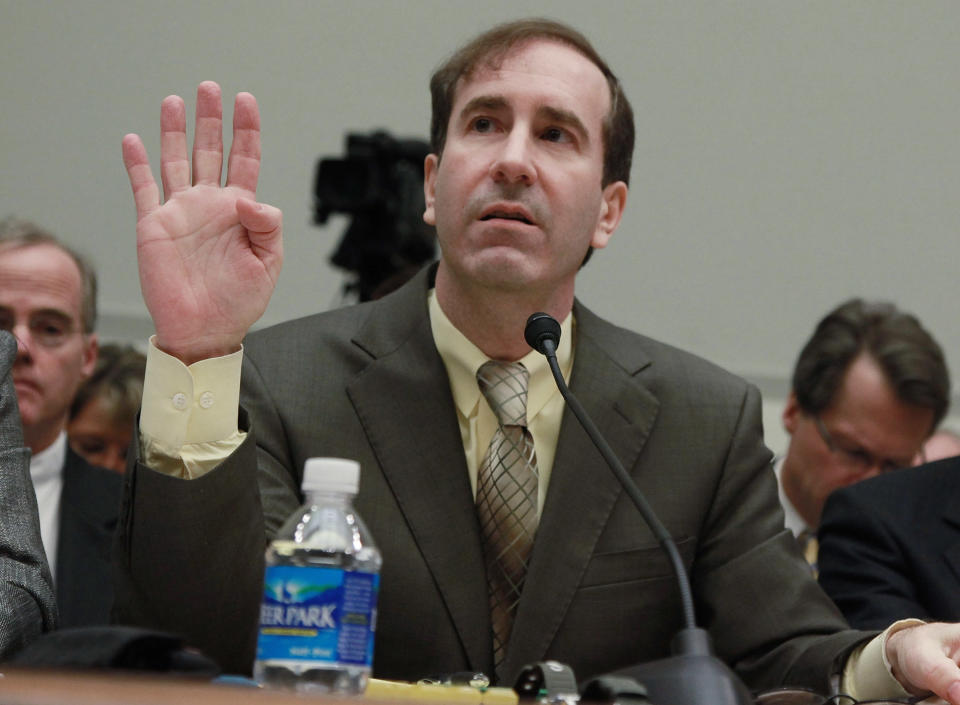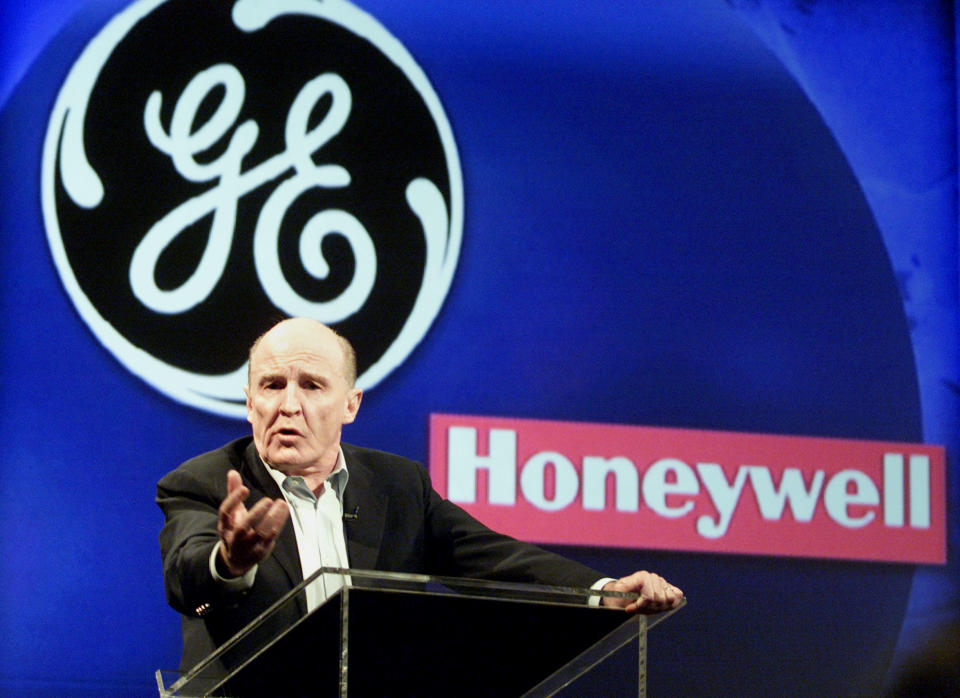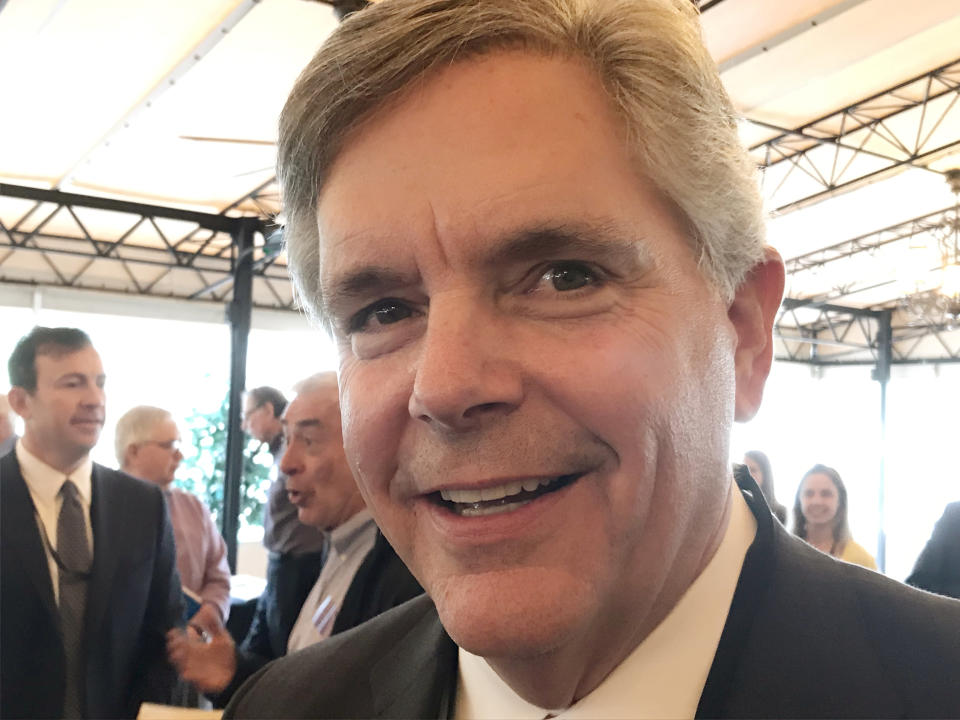Madoff whistleblower says two key clues put GE on his radar
The accountant who uncovered Bernie Madoff’s Ponzi scheme is again blowing his whistle, this time going after GE (GE) for its accounting practices in a 175-page report.
Harry Markopolos, a forensic accountant, is calling the alleged fraud “bigger than Enron and WorldCom combined,” contending it amounts to $38 billion or 40% of GE’s market cap.
The report — a collaboration between Markopolos and his colleagues and an undisclosed hedge fund with a short position on GE — alleges the conglomerate has been hiding massive losses on eight long-term care insurance deals it executed.
In the report, Markopolos says two key clues put GE on his radar: so-called negative surprises and a decade’s worth of interviews with GE executives who refused to discuss the past.
‘The biggest clue’
“The biggest clue that this is an Enronesque accounting fraud were the $53.5 billion in Negative Surprises in 2017 and 2018 which destroyed over $130 billion in market capitalization,” Markopolos writes.

The report notes several large negative surprises, including dividend cuts totalling $8 billion per year, $15 billion added to long-term care insurance reserves, a $22 billion writedown.
“When you see that many large dollar adjustments in such a short time frame that’s not house-cleaning, it’s a red flag that the prior years’ financial statements were false, internal controls are weak to non-existent, and there are a lot more cockroaches in the GE earnings’ kitchen that you haven’t seen yet,” Markopolos continued.
The second clue? GE executives never seemed to want to discuss these negative events in media interviews, according to Markopolos.
“When asked what went wrong with all of these acquisitions, asset sales, negative earnings surprises, surprise write-downs and dividend cuts, senior leadership of this company repeats the same message, ‘We’re not here to discuss the past, we’re only going to discuss the future,’” wrote Markopolos. “This is no surprise — from people who have something to hide.”
GE disputes Markopolos’s claims. “We have never met, spoken to or had contact with this person. While we can’t comment on the detailed content of a report that we haven’t seen, the allegations we have heard are entirely false and misleading,” the company said in a statement. “GE stands behind its financials. We operate to the highest-level of integrity in our financial reporting and we have clearly laid out our financial obligations in great detail.”
‘GE’s earnings numbers couldn’t be true’
Markopolos says he first became aware of potential accounting irregularities with the company in the late 1990s at the CFA Society of Boston.
“[Society members] would all comment on how they believed GE’s earnings numbers couldn’t be true because they always met or beat consensus earnings estimates every quarter, year after year, no matter what the economy was doing,” writes Markopolos.

Markopolos nows says GE hit these numbers because it booked insurance premiums as “earnings” while policy holders were young and hadn’t started filing claims. At the same time, Markopolos said, GE wasn’t setting aside enough money to pay out claims in the future.
“GE continuously failed to fund adequate reserves to offset its LTC [long-term care] liabilities, allowing itself to book billions in ‘earnings’ over a period of decades and pay dividends to the holding company and then to shareholders,” the report alleges, noting the money should have been going to reserves.
Markopolos says the alleged fraud has flown under the radar because of the complexity of GE’s accounting practices. Instead of examining GE’s SEC filings, he said his team examined more complicated documents filed with state insurance regulators. The report alleges that $29 billion in losses is coming in the form of a wave of long-term care claims, and that GE has not adequately set aside reserves. GE says it has adequate reserves.
Markopolos: GE’s survival has three key risk factors
The report notes three main risk factors for GE going forward.
"First, a stiff recession after 10 years of domestic economic growth, will see that the next chapter in GE’s history is Chapter 11,” Markopolos quips. The second he points to is that 2021 won’t have any positive cash flow because of the $29 billion reserve hit.

The third difficulty could be that if GE manages to borrow more money to fund its long-term care liabilities, it will have $107 billion in debt plus $27 billion in pension liabilities, if the report is true.
“How is GE, a company that has almost no cash and which earned a total of only $14.9 Billion over the last seven years, going to out-earn over $160 Billion in liabilities with the operating business units it hasn’t already sold to stay afloat,” Markopolos asks.
The market has reacted a bit, but so far, analysts are still figuring things out.
“We are not currently in a position to say whether that estimate is reasonable, although it is certainly concerning,” Barclays wrote in a note. The note said the average policy-holder age is 77 (older is worse), 60% of policies have lifetime benefit option, and 84% have inflation protection.
“For these reasons we view GE’s situation as much worse than other insurers with legacy LTC exposure. GE has said that claims begin at an average age of 82-84,” the note said.
This is not the first bad news for GE. The once-great energy conglomerate was kicked off the Dow Industrial Average in July 2018 and has shed many of its businesses.
Its shares were trading down more than 12% just before 1 p.m. on Thursday.
Ethan Wolff-Mann is a writer at Yahoo Finance focusing on consumer issues, personal finance, retail, airlines, and more. Follow him on Twitter @ewolffmann.
Follow Yahoo Finance on Twitter, Facebook, Instagram, Flipboard, SmartNews, LinkedIn,YouTube, and reddit.